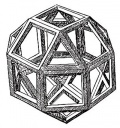Rhythm
From The Art and Popular Culture Encyclopedia
|
"Who of us has not dreamed, on ambitious days, of the miracle of a poetic prose: musical, without rhythm or rhyme; adaptable enough and discordant enough to conform to the lyrical movements of the soul, the waves of revery, the jolts of consciousness?" --À Arsène Houssaye" (1869) by Charles Baudelaire "Reggae [...] is a product of the union of West African rhythms and European melody and harmony."--Cut 'n' Mix (1987) by Dick Hebdige, p. 43 |
.jpg)
Illustration: Sheet music to "Buffalo Gals" (c. 1840), a traditional song.
Maxim: "writing about music is like dancing about architecture".
|
Related e |
|
Featured: |
Rhythm is the variation of the length and accentuation of a series of sounds or other events. It is inherent in any time-dependent medium, but it is most associated with music, dance, and the majority of poetry.
Rhythm sections
Rhythm in music
All musicians, instrumentalists and vocalists, work with rhythm, but in modern music a rhythm section generally consists of percussion instruments, bass and possibly chordal instruments (e.g., guitar, banjo) and keyboard instruments, such as piano. In recent years, music theorists have attempted to explain connections between rhythm, meter, and the broad structure and organization of sound events in music. Some have suggested that rhythm (and its essential relationship to the temporal aspect of sound) may in fact be the most fundamental aspect of music. Hasty (1997, p. 3), for example, notes that "Among the attributes of rhythm we might include continuity or flow, articulation, regularity, proportion, repetition, pattern, alluring form or shape, expressive gesture, animation, and motion (or at least the semblance of motion). Indeed, so intimate is the connection of the rhythmic and the musical, we could perhaps most concisely and ecumenically define music as the 'rhythmization' of sound." Rhythm is likely the most fundamental aspect of music, because percussion instruments were likely in use long before stringed instruments. Tribal groups dancing to music made only with percussion instruments is an ancient human practice, which reportedly continues today in primitive groups. The three fundamental elements of music are rhythm, melody, and harmony. Rhythm is the only essential element of these three, because Music can be played with Rhythm only, as in the aforementioned case of ancient and modern tribes. Try playing Music with only melody or harmony, or both (without rhythm), it can't be done.
See also
- drums - bass - beat - breaks - dance music - groove - syncopation - rhythm and blues - riddims

